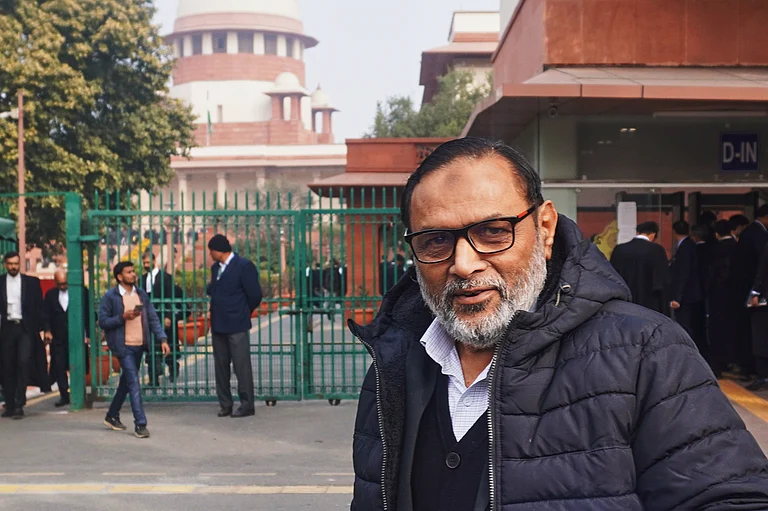Indian political parties, much exercised over quota for women in Parliament, should know that reservation for women in legislative bodies is increasingly the global trend. Men are giving way to women, and they are adopting different methods of doing it. One way is a reservation in parliament itself, as proposed in India, which has introduced a bill seeking to reserve 33 per cent of seats in the Lok Sabha and Rajya Sabha. The other is a reservation that parties introduce, either voluntarily or by law, in the number of women candidates they field in an election.
"Ninety countries have some kind of quota," Julie Ballington, researcher at the Gender Partnership Programme of the Geneva-based Inter-Parliamentary Union (IPU), told Outlook. "That's half the countries of the world. Those that do the worst have no quota." The trend is towards more and more countries implementing quotas, she said. "On one level you might have a political party adopting its own informal quota—in the UK we saw that happening with the Labour Party—on the other level you can have a legislative quota. You can see combinations of those in different countries."
But there isn't one ideal model. Quotas haven't worked in some countries, others have done fine without them. Iraq, Afghanistan and Pakistan have a far higher proportion of women in their parliaments, but it is nobody's case that the position of women in these countries is better than in India. Women members of the Iraqi parliament can do little if it isn't safe even to move out of the house. Quotas in Iraq and Afghanistan are dictated by the US, which otherwise has little hesitation in bombing and killing civilians, women among them.

On the other hand, Cuba has the third highest percentage of women in parliament—43 per cent. It has no quotas, "but it has a special political ideology," Ballington says. "There is a trend that parliaments that are more left-leaning, and political parties that are left-aligned are more likely to adopt quotas than centre-right parties." As always, there is a 'but' to follow just about anything said on the best way to have more women in parliament. For instance, the Nordic countries aren't under the sway of Left ideology, but they all have over 40 per cent women's representation in parliament.
The model of democracy more sensitive to women's representation is the system of proportional representation (PR), which is increasingly being followed in Europe and Africa. Under this system parties would send in members of parliament in proportion to the percentage of votes they polled, with a minimum requirement of, say, 5 per cent to send in any at all. People vote for parties rather than individual candidates, and parties can then pick more women to send into parliament.
But party quotas for women aren't likely to succeed in the first-past-the-post system, which is what India follows. As Ballington says, "Since in the PR system a party submits a whole list of candidates, it can implement a quota on that list. In a first-past-the-post system it is much harder to do that because ultimately the voters are electing one person per constituency, and in that sense it becomes hard to implement a quota. In a PR system the logic of distribution lies more closely with the political party. Typically, the voter is electing a whole political party rather than an individual candidate." Gender, understandably, takes a backseat in choosing a winnable candidate to contest in the first-past-the-poll system.
Greater representation for women in candidates lists, rather than in parliament itself, will not work if parties were to put up women in unwinnable seats, declare they've done the right thing, and plead helplessness if people, half of them women, have voted against them. "Parliamentary quotas make more sense in countries that have the first-past-the-post system as in UK and India," said Ballington. "Where you have political parties implementing their own quotas, that tends to happen more in the PR system."

Count the ladies: Sweden's cabinet of ministers in Stockholm outside the royal palace
Rwanda has the highest number of women in parliament in the world, 48.8 per cent, through a combination of reservation in parliament and party quotas in a system which is a melange of both PR and direct elections. Sweden, following the PR system, has 46 per cent women MPs. In fact, the Nordic countries that send so many women into parliament all follow the PR system.
Party quotas within a PR system seem the best bet for greater representation for women, 'but' again, they aren't the only way. The first-past-the-post system has delivered too—for instance, when the Labour Party under Tony Blair won a landslide 11 years ago that brought in all the 'Blair babes', as the losing men called them. What Labour did was to put in several women in winnable seats. A party prioritising led to results that were better, and more 'natural' than a quota system might have permitted. 'But' again, there is no single pattern here. France has a law demanding that parties implement a kind of quota, but next door Germany, does not and has close to twice as many women in parliament proportionately.
It can be hard, then, to set out the single best way. "It depends on what you mean by best," Stina Larserud, policy specialist with the Stockholm-based International Institute for Democracy and Electoral Assistance (IDEA). Quotas can be best "if you mean the most effective way to get more women into parliament. If you mean to get women empowered in all parts of society, the answer is I don't know. There are many other ways of course of empowering women. Ideally all this should come hand in hand, women's representation in parliament and women's representation in all other parts of society, but I think what we can influence quite easily is representation of women in parliament, and one way of influencing that is by quotas." At under 10 per cent in India, and with a greater push for more all around, whatever happens to the bill now in Parliament, doing nothing seems less and less an option.






















